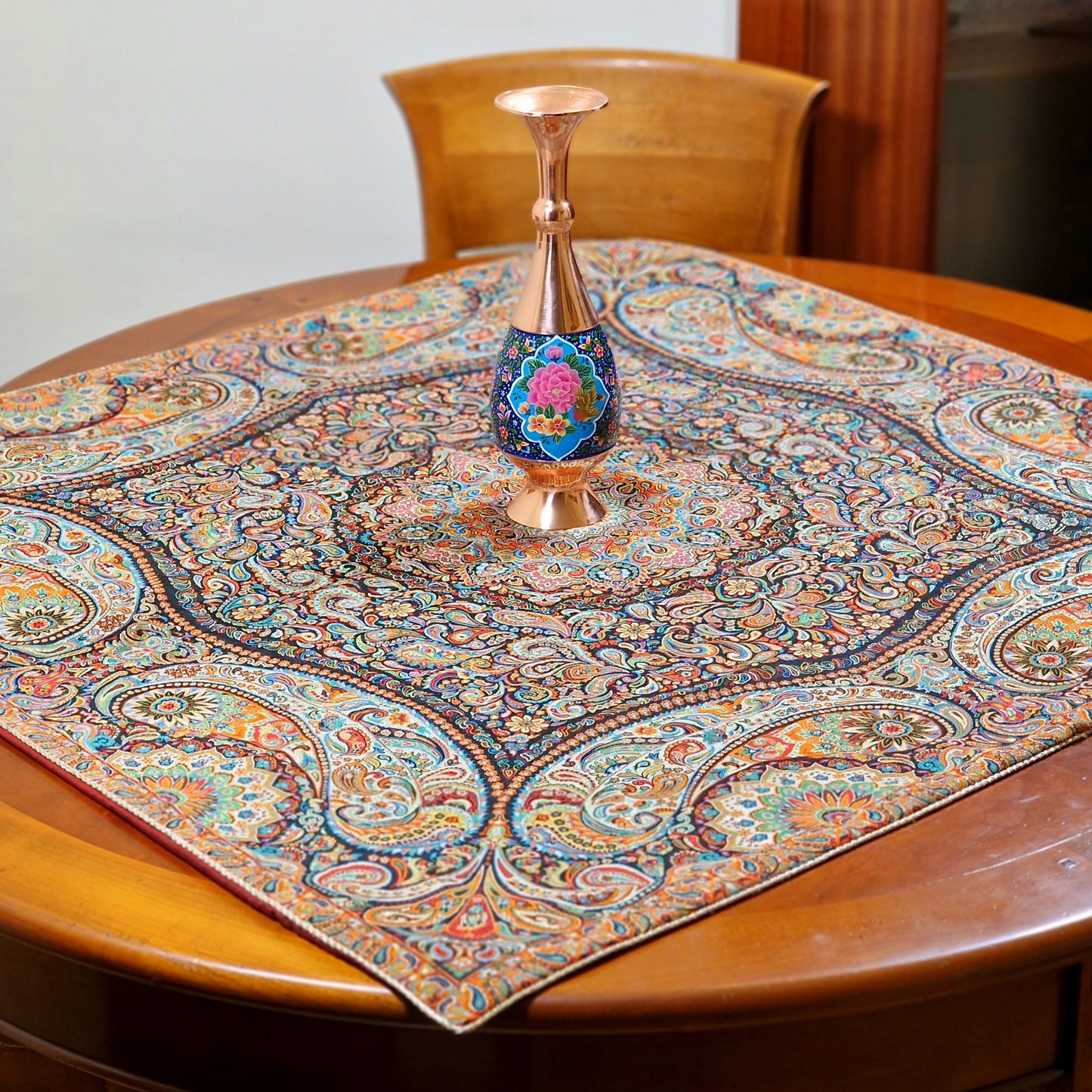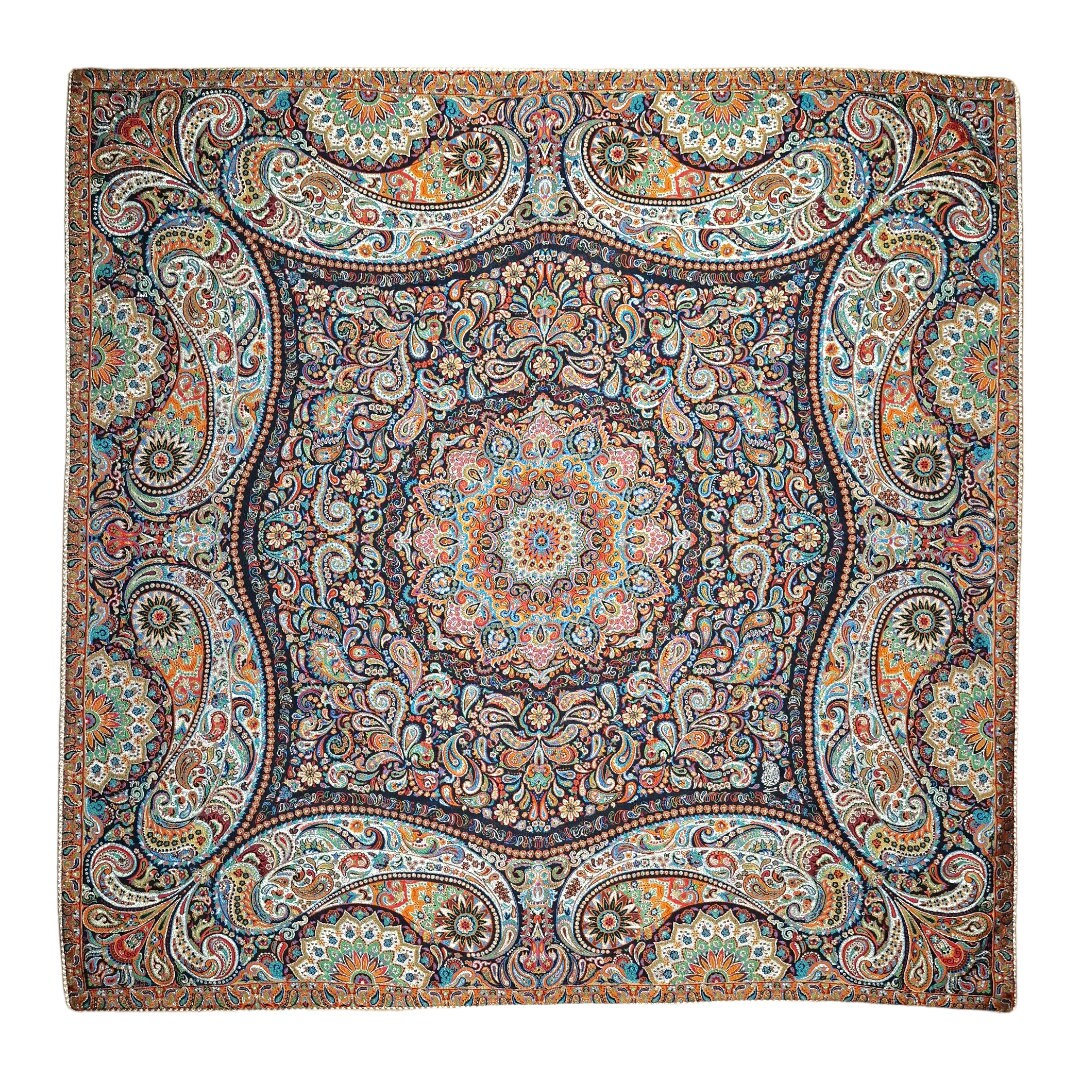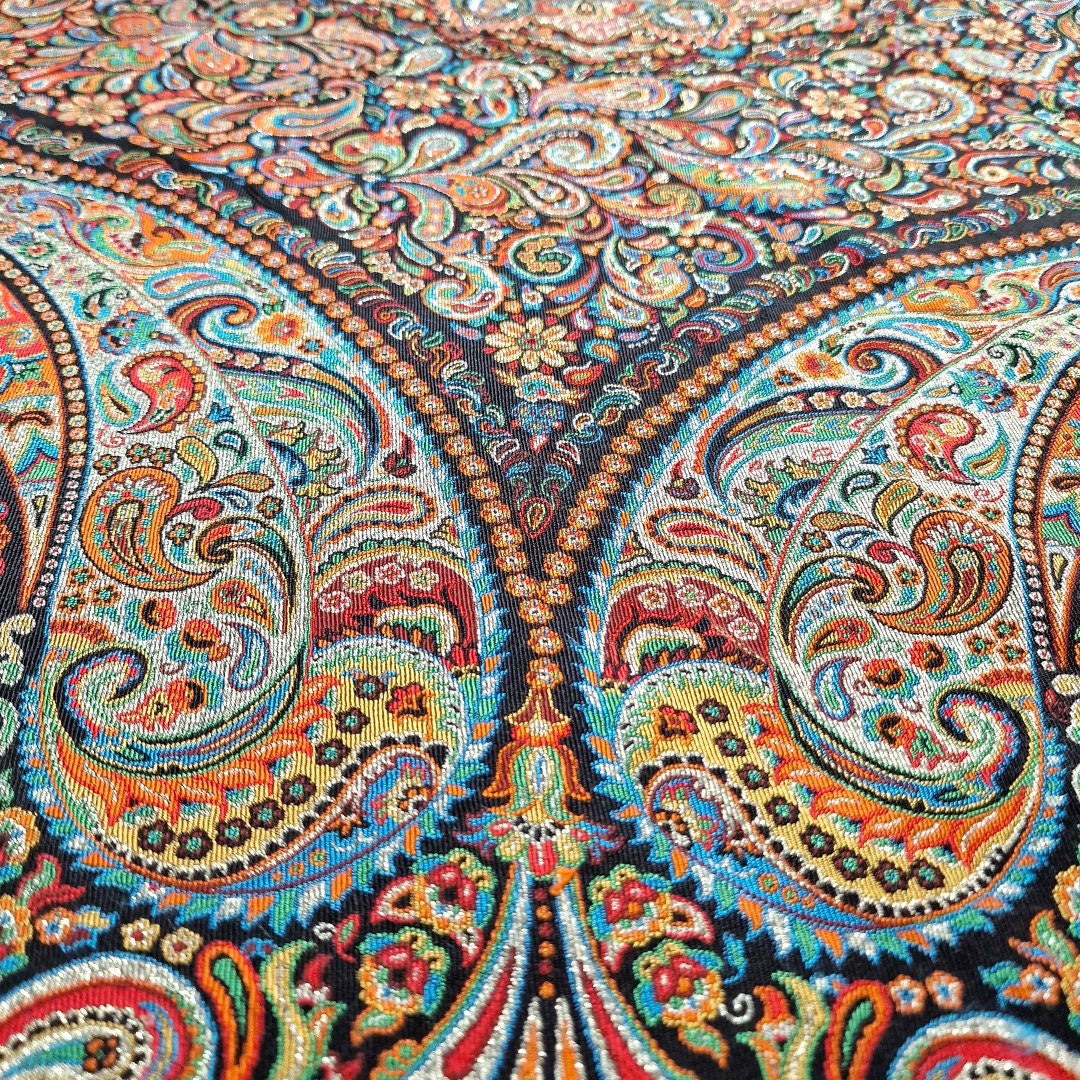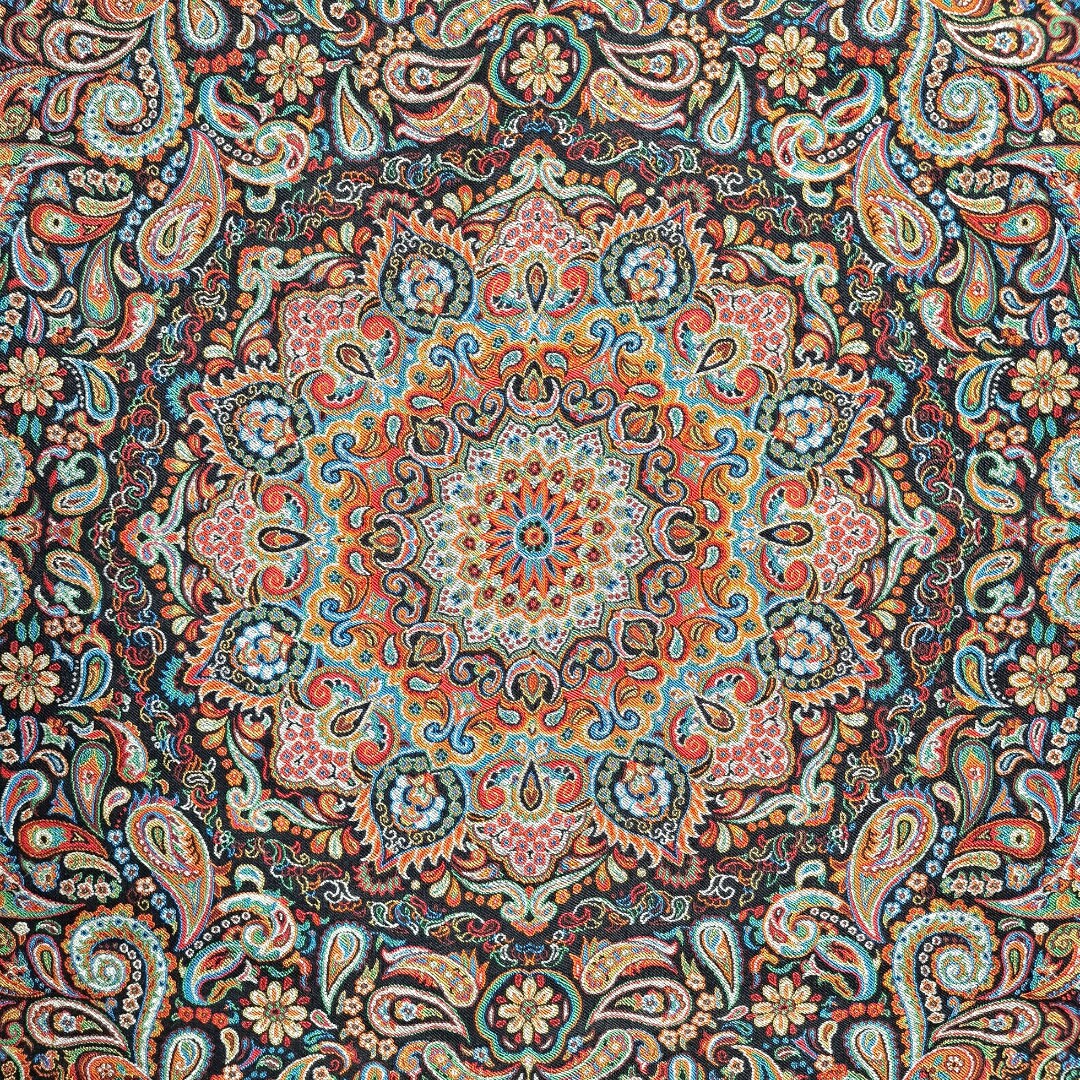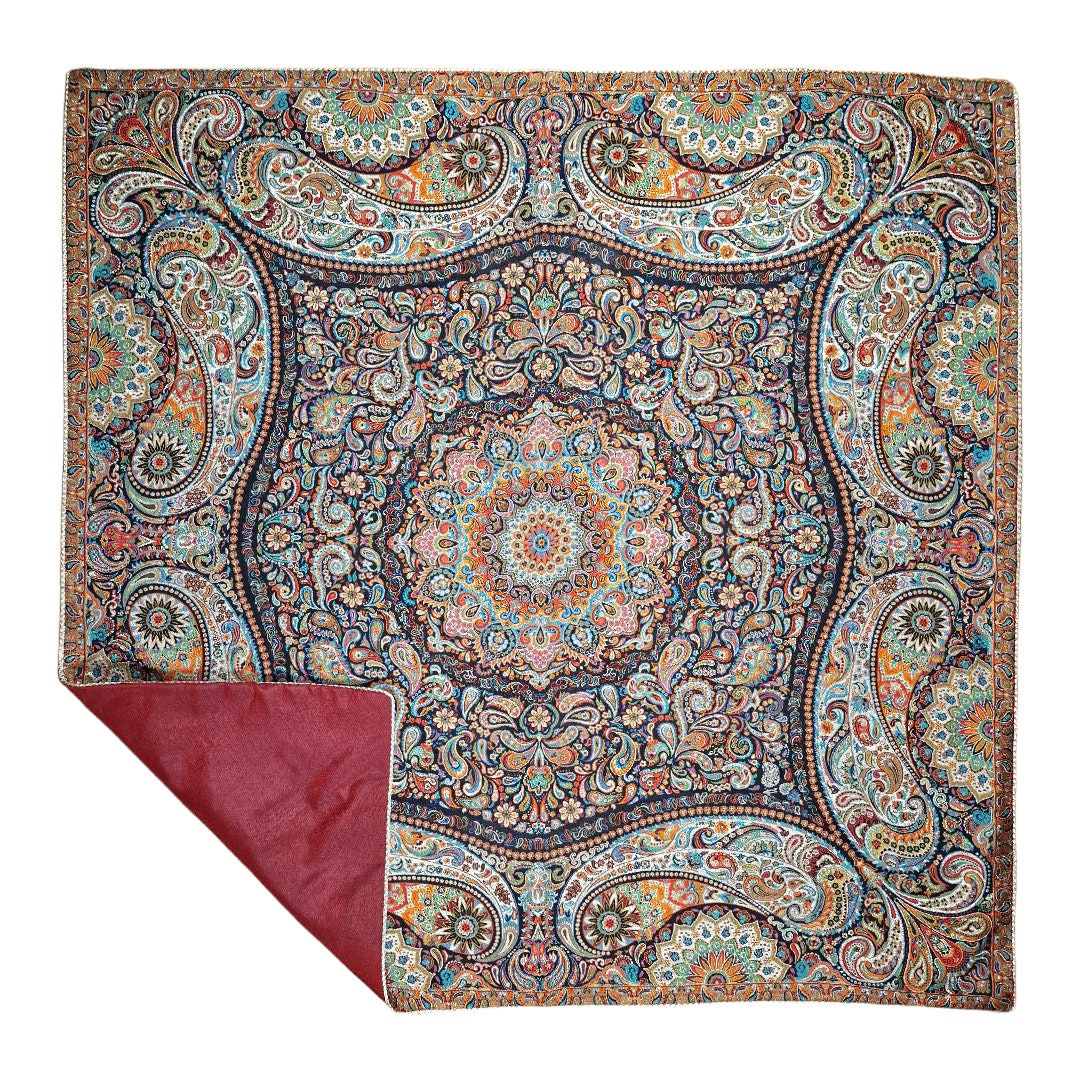Kervansara
Luxurious decorative tablecloth "termeh" with Phenomenon design made of silk with 8 colors, an exclusive gift of Persian art.
Luxurious decorative tablecloth "termeh" with Phenomenon design made of silk with 8 colors, an exclusive gift of Persian art.
Couldn't load pickup availability
Luxurious 97x95 cm termeh tablecloth made of silk with eight colours and a shiny finish covered with an elegant maroon satin taffeta lining. This majestic and intricate design on a black background consists of a large central bergamot or "toranj", a legendary fruit from Persian mythology considered one of the fruits of heaven, surrounded by a myriad of intertwined floral and plant motifs such as the omnipresent "boteh Jeghe" or curved cypress or the famous palmette of Shah Abbas, which try to evoke a fertile and paradisiacal garden.
In the frame we can make out several semicircles that again refer to the bergamot, as well as the representations in which a delicately decorated bush seems to embrace it. Above these, there are other large, elongated bushes that seem to be dying and are known as cloak bushes. In addition, among the great variety and originality of designs spread across the surface of the tablecloth, we can see some bushes of anger and reconciliation, twins and idols of cashmere or the mother and baby, which symbolise maternal affection and fertility. How can we not marvel at such an explosion of colour and elegance! The Phenomenon design, which can be found in a great variety of colours and models, is one of the most spectacular and beautiful.
In his famous “Book of Marvels” from the end of the 13th century, the Venetian merchant Marco Polo already mentions the splendid and sumptuous Yazdi fabric (what we know today as termeh), made of silk and gold and highly appreciated by the merchants of the fascinating Persian city of Yazd, an indisputable stop on the Silk Road, along which it was traded. Its origins date back to the Achaemenid period some 2,500 years ago, but it was under the reign of the Safavid dynasty (16th century) that a significant refinement of the techniques took place. Until the 1970s, this delicate fabric was woven entirely by hand by two people, usually women, which required a lot of time and patience, and the colours were obtained from natural pigments (herbs and minerals). Nowadays, there are few factories that produce termeh in a completely traditional way due to the great difficulty of the process, which is why they are usually made with a semi-automatic fabric processing machine that allows for a much wider variety of designs.
The higher the density of the threads and the higher the number of colours used, the greater the workmanship and therefore the greater its value, as well as if the piece is older. Silk, wool, silver or gold are often used in its production, and in some cheaper cases, polyester is used. Its designs include traditional motifs, especially the "boteh jeghe", a curved or inclined cypress that symbolises modesty and comes from Zoroastrianism, where it was related to life and eternity, as well as being a sign of strength, endurance and perseverance. The sacred cypress of Kashmar is very famous in the history of Persian culture. It is a mythical tree mentioned in the "Shahnameh" or Book of Persian Kings, which was planted by the prophet Zoroaster from a branch that he had taken from Paradise.
The oldest surviving representation of this pattern dates back to 3000 BC and is in the Baghdad Museum. It is an Assyrian-Elamite carving in which two forms of the "boteh jeghe" hang from a vase. The figure of the cypress was also carved in the bas-reliefs of Persepolis and is one of the most common trees in the design of the main Persian gardens. This is without a doubt one of the most famous patterns in Persian embroidery, represented in many other arts and loaded with symbolism and diverse interpretations. In fact, this design of Persian origin has also been widely used in India, Turkey, throughout the Middle East and also in the West, where it became popular during the 18th and 19th centuries under the nickname "paisley", due to the importation and subsequent replication of shawls from the Indian region of Kashmir in the Scottish city of Paisley.
Another widely used motif is the bergamot or "toranj", from the citrus family, a symbol of happiness and fertility and considered one of the fruits of heaven according to Persian mythology along with the pomegranate. This pattern has been widely used in the decoration of book covers and pages, especially in the illumination of the Koran, which denotes its probable religious connotations, as well as in sacred places, carpets and many other crafts. Sometimes it is represented in the shape of a rhombus or almond, other times square, round, as if it were a sun, a star or even a flower and it is usually surrounded by plant motifs, Islamic, geometric and floral designs.
Today, termeh fabric is used in clothing, accessories, bed and cushion covers, tablecloths, footwear, bags, furniture decoration, etc. It is a very common gift and is present at family celebrations, weddings, baptisms or national holidays such as Nowruz (Persian New Year) or Yalda Night. In times past, this exquisite fabric was reserved mainly for monarchs, aristocracy and nobility, and today it is one of the most sought-after products by travelers. At Kervansara you will find beautiful tablecloths and table runners full of color, which will undoubtedly give a glamorous touch to the decoration of your home.
Origin: Spain.
Share
